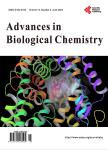Identification of CAR/RXR<i>α</i>Hetero-dimer Binding Sites in the Human Genome by a Modified Yeast One-Hybrid Assay
Identification of CAR/RXR<i>α</i>Hetero-dimer Binding Sites in the Human Genome by a Modified Yeast One-Hybrid Assay作者机构:Department of Biomolecular Science Faculty of Science Toho University Chiba Japan Faculty of Pharmaceutical Sciences Toho University Chiba Japan
出 版 物:《Advances in Biological Chemistry》 (生物化学进展(英文))
年 卷 期:2015年第5卷第2期
页 面:83-97页
学科分类:1002[医学-临床医学] 100214[医学-肿瘤学] 10[医学]
主 题:Constitutive Androstane Receptor Retinoid X Receptor Transcription SNP Polymorphism Nuclear Receptor
摘 要:The constitutive androstane receptor (CAR) is a transcription factor that belongs to the nuclear receptor superfamily. CAR binds as a heterodimer with the retinoid X receptor α (RXRα) to CAR response elements (CAREs) and regulates the expression of various drug metabolizing enzymes and transporters. To identify CAR/RXRα binding sites in the human genome, we performed a modified yeast one-hybrid assay that enables rapid and efficient identification of genomic targets for DNA-binding proteins. DNA fragments were recovered from positive yeast colonies by PCR and sequenced. A motif enrichment analysis revealed that the most frequent motif was a direct repeat (DR) of RGKTCA-like core sequence spaced by 4 bp. Next, we predicted 149 putative CAR/RXRα binding sites from 414 unique clones, by searching for DRs, everted repeats (ERs) and inverted repeats (IRs) of the RGKTCA-like core motif. Based on gel mobility shift assays, the CAR/RXRα heterodimer could directly interact with the 108 predicted sequences, which included not only classical CAREs but also a wide variety of arrangements. Furthermore, we identified 17 regulatory polymorphisms on the CAR/RXRα-binding sites that may influence individual variation in the expression of CAR-regulated genes. These results provide insights into the molecular mechanisms underlying the physiological and pathological actions of CAR/RXRα het-erodimers.



